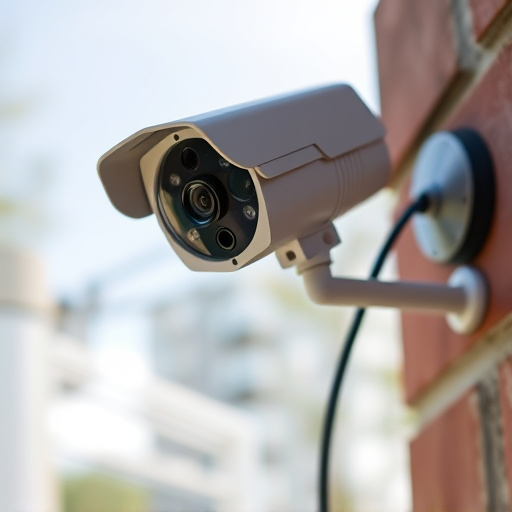In today's digital age, dummy cameras are popular for home and business security due to their affordability and effectiveness in deterring crime. Choosing the most convincing dummy camera type that mimics genuine surveillance gear with features like LED indicators, motion sensors, high-resolution images, and realistic design is key. Strategic placement of these cameras enhances security perception while raising legal and ethical concerns about privacy. To avoid purchasing phony equipment, conduct a thorough inspection of the device, its packaging, and technical specifications from reputable manufacturers. Test its features before setup to ensure it serves as a reliable deterrent.
“In today’s digital age, home security is a top priority. However, an often overlooked danger lurks in the form of fake security monitoring devices. This comprehensive guide delves into the intricacies of identifying and setting up realistic mock surveillance systems, highlighting the most convincing dummy camera types available. From legal considerations to effective strategies for avoiding scams, learn how to fortify your defenses against phony security equipment.”
- Understanding Fake Security Monitoring Devices
- Identifying the Most Convincing Dummy Camera Types
- Setting Up a Realistic Mock Surveillance System
- Legal Considerations and Ethical Implications
- Effective Strategies to Avoid Falling for Phony Security Equipment
Understanding Fake Security Monitoring Devices
Understanding Fake Security Monitoring Devices
In today’s digital era, home and business security is a top priority. However, for those looking to deter potential thieves or intruders without breaking the bank, fake security monitoring devices have emerged as a popular alternative. Among these, dummy cameras stand out as one of the most convincing options available in the market. These artificial cameras mimic real security equipment, providing a visual deterrent that can significantly reduce crime rates.
The most convincing dummy camera types often feature intricate designs and high-quality materials to closely resemble genuine surveillance gear. They are strategically placed in areas visible to passersby or potential intruders, creating the illusion of constant monitoring. This simple yet effective strategy can deter criminal activities, as many offenders prefer to target locations where security measures appear less robust.
Identifying the Most Convincing Dummy Camera Types
When selecting dummy cameras for security monitoring, choosing the most convincing type is paramount to achieving a credible deterrent effect. The best options mimic real camera setups closely, featuring details like LED indicators, realistic design, and even movement sensors. These advanced models not only look the part but can also trigger alerts when activated, enhancing the overall security perception.
Among the most convincing dummy camera types are those designed to resemble popular brands, offering a familiar aesthetic that blends seamlessly with existing surveillance equipment. Additionally, weatherproof options ensure longevity, making them suitable for both indoor and outdoor installations. By strategically placing these realistic decoys, property owners can significantly enhance their home security while maintaining an affordable and low-maintenance solution.
Setting Up a Realistic Mock Surveillance System
Setting up a realistic mock surveillance system requires selecting the most convincing dummy camera type for your needs. One popular choice is the HD simulant security camera, designed to mimic the look and feel of genuine CCTV equipment. These cameras offer high-resolution images, infrared capabilities, and even motion detection, making them hard to distinguish from real cameras.
To enhance realism, consider combining these dummy cameras with adjustable mounting options, such as wall brackets or ceiling mounts, which allow for versatile placement. Additionally, investing in realistic power cables and weatherproof housings further blurs the line between fake and actual security gear. By integrating these elements, you can create an immersive mock surveillance setup that serves as an effective training tool or a deterrent for potential intruders.
Legal Considerations and Ethical Implications
The setup of fake security monitoring devices, while seemingly harmless as a means to deter crime, raises significant legal considerations and ethical implications. In many jurisdictions, the installation of surveillance equipment, even dummy cameras, requires compliance with stringent privacy laws. These regulations govern the collection, storage, and use of personal data, ensuring individuals’ right to privacy is respected. Using convincing dummy camera types that mimic real security systems could potentially mislead people into a false sense of security, leading to concerns about consent and informed awareness.
Moreover, the ethical dimensions extend beyond legal boundaries. The placement of these devices in public spaces or private residences might infringe on civil liberties and create an atmosphere of surveillance culture. As technology advances, ensuring that fake security setups do not contribute to a chilling effect on free expression and behavior becomes increasingly crucial. In choosing the most convincing dummy camera type for your setup, it’s vital to prioritize ethical deployment practices that balance security concerns with respect for individual privacy rights.
Effective Strategies to Avoid Falling for Phony Security Equipment
To avoid falling for phony security equipment, especially the most convincing dummy camera type, it’s crucial to inspect the device closely and verify its functionality. Look for telltale signs such as poor quality construction, inconsistent branding, or lack of technical specifications on the packaging. Reputable manufacturers typically include detailed information about resolution, motion detection range, and connectivity options. Always opt for well-reviewed brands and purchase from trusted retailers to ensure you’re getting genuine products.
Additionally, test the device’s features before setting it up. Check if the camera captures clear images, the motion sensor responds accurately, and the alarm sounds as advertised. Many dummy cameras are designed with realistic features but lack actual surveillance capabilities. By thoroughly testing the device, you can identify any red flags that might indicate a phony product.
While fake security monitoring devices may seem like an innocent way to enhance home or business security appearances, they can lead to false sense of security and legal complications. It’s crucial to identify the most convincing dummy camera types based on current market offerings, understanding their limitations, and setting up a realistic mock surveillance system to avoid falling for phony equipment. Always remember that true security lies in legitimate, functional systems and awareness of potential deceptions.
